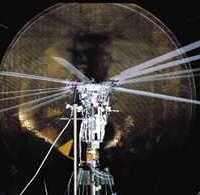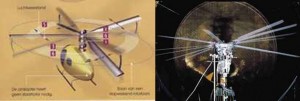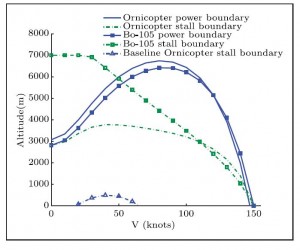The tail rotor found on conventional helicopters has always been considered a ‘necessary evil’. Without it the helicopter is uncontrollable in yaw, yet the tail rotor is an expensive contraption, it consumes a lot of power, yielding nothing in return, and it provides only marginal control authority under unfavorable wind conditions. On top of that, it is noisy, vulnerable and dangerous to bystanders. The ideal solution to all these problems would be to design a main rotor that eliminates the need for a tail rotor. Professor van Holten started developing in 2002 a revolutionary new design for a rotary wing. The Ornicopter is a single rotor helicopter without a reaction torque. It is fully controlled using only one rotor. But how can this be?
The secret to the Ornicopter concept is in rotor blade flapping. The rotor blades are forced to flap up and down once per revolution, thus generating a propulsive force on the blades that drives the rotor around the hub. By increasing or decreasing the amplitude of this flapping movement, the yaw motion of the fuselage can be controlled.
The first analyses of the Ornicopter showed that, on the one side, it had a similar power requirement to a conventional helicopter, as well as very similar longitudinal and lateral stability and controllability characteristics to a conventional helicopter. On the other side, the Ornicopter generated higher vibratory loads than in a conventional helicopter, and its performance was strongly limited by the stall effect.
The re-designed Ornicopter Stall area
Future work will be concentrated on reducing the vibratory loads on the Ornicopter.




